This article was medically reviewed by Jonas DeMuro, MD. Dr. DeMuro is a board certified Pediatric Critical Care Surgeon in New York. He received his MD from Stony Brook University School of Medicine in 1996. He completed his fellowship in Surgical Critical Care at North Shore-Long Island Jewish Health System and was a previous American College of Surgeons (ACS) Fellow.
There are 10 references cited in this article, which can be found at the bottom of the page.
This article has been viewed 22,734 times.
Catheters are tubes used to either drain bodily fluids or to deliver medicines, fluids, or gases to patients. Catheters are helpful for people who have urinary incontinence, have urinary retention, have had prostate surgery or surgery on the penis, urethra, or vulval areas, or have other conditions that make it difficult to urinate.[1] Before attempting to use a catheter, it is essential you receive training from a doctor or nurse.
Steps
Using a Catheter For Women
-
1Gather the supplies. Before you start, you need to make sure you have all your supplies together. You need your catheter, open and ready to be used, a cleaning wipe, lubricant, and a container for the urine, if needed.[2]
- After opening the catheter, make sure to only touch the end of the catheter that will be outside your body.
-
2Clean your hands. Wash your hands with soap and water, and then dry them thoroughly. Washing your hands helps to prevent contamination and reduce the risk of infection.[3]Advertisement
-
3Wash the genital area. Place one leg on the toilet and twist just a bit to one side. Using one hand, spread the labia and locate the urethral opening. Using your other hand, wash the entire genital area three times, going from front to back to avoid introducing bacteria from feces into the genital area. Rinse well and dry with a cotton towel.[4]
- Use a fresh towelette or baby wipe every time you wipe.
- Alternatively, you can use cotton balls with mild soap and water.
- You can use a mirror to help you see what you're doing.
-
4Insert the catheter. Apply a small amount of the lubricant to the tip and the first 2 inches of the catheter. Take a deep breath, and with one hand separating the labia, use the other hand to insert the catheter gently into the urethra using firm, gentle pressure. Don't push hard, and don't force it. As you insert it, exhale slowly. Twist the catheter slightly one way and the other to help it through the urethra.[5]
- Insertion can be quite uncomfortable, so breathing can help make it more comfortable. If the catheter is not sliding in, don't worry. Try to relax, breathe deeply, and try again.
- If the catheter comes pre-lubricated, you don't have to apply more lubricant.
- The tubing cannot be pushed through the bladder, so don't worry about that.
-
5Be prepared for the urine release. Once the catheter enters the bladder, the release of urine will be immediate. Have the external end of the catheter in the toilet or have a drainage bag ready. If you use the the drainage bag, keep it as low as possible so gravity can do its part.[6]
-
6Remove the catheter and clean up. Remove the catheter with a gentle and even pull. Dispose of all the used supplies. Wash and dry the entire genital area as well as your hands.[7]
- If your catheter is disposable, you can throw it away at this point.
- Removing the catheter is much easier than inserting it.
-
7Clean a reusable catheter. After you are finished, wash your catheter with soap and water. You can also wash it with antiseptic. Rinse the catheter thoroughly after washing it. Dry the catheter by folding it in a towel and hanging it up to air dry. After it is dry, place it in a plastic bag.[8]
- If your catheter is not reusable, it is important that it only be used once, and not reused.
Using a Catheter For Men
-
1Collect your supplies. Before beginning, make sure to collect all the supplies you need. This includes the catheter, a towelette or other cleaning wipe, lubricant, and a container for urine, if needed.[9]
- Go ahead and open the catheter so it is ready to use. Make sure to touch only the end of the catheter that will be outside your body.
-
2Wash your hands. After gathering all the supplies, wash your hands with soap and water. This ensures you don't contaminate anything or cause an infection.[10]
-
3Wash your penis. Wash the tip of your penis with a towelette, soap and water, or baby wipes. Don't use alcohol to clean off the tip of your penis. Alcohol can be very drying.[11]
- Push back the foreskin of your penis before you wash if you are uncircumcised. Make sure to keep the foreskin back during the whole catheterization process.
-
4Apply lubricant. After cleaning, apply a small amount of the lubricant to the tip and the first two inches of the catheter. Some catheters may come pre-lubricated, so you may not have to apply lubricant to the catheter.[12] Make sure the lubricant is water soluble.
-
5Insert the catheter. Hold your penis straight out from your body, stretching it so that it is at a 90 degree angle (right angle) to your body. Take a deep breath, and using your other hand, insert the catheter using firm, gentle pressure. Exhale as you insert it. Do not push hard on the catheter, and do not force it. Twist the catheter slightly one way and the other to “thread it” through the urethra. The male urethra is quite long; you will not push it too far, though it may look as if a very long part of the catheter has disappeared into you. Don't worry, you won't be able to push it through your bladder.[13]
- Insertion isn't usually painful, but it can be quite uncomfortable. Breathing can help. If the catheter is not sliding in, try to relax, breathe deeply, and try again.
- Use a mirror placed so that you can see what you are doing, especially the first few times.
- Some men prefer to gently squeeze the end of the penis to open up the urethra just as they begin to insert the catheter
- Pulling the penis straight out straightens out the urethra and allows the catheter to follow the straightest path to the bladder.
-
6Make sure the external end is secure. Once the catheter enters the bladder, the release of urine will be immediate. Be prepared for this by either having the external end in the toilet or a drainage bag. Keep the drainage bag as low as possible, allowing gravity to do its part. When the urine begins to flow, push the catheter in about two more inches.[14]
-
7Remove the catheter gently. Remove the catheter with a gentle and even pull. Removing it is much easier than inserting it. After you remove it, dispose the urine and all other materials. Wash and dry your penis, and then you are finished.[15]
- If you have a disposable catheter, you can dispose of it at this stage as well.
-
8Dispose of the catheter or clean it if it is reusable . Wash the catheter with soap and water. You can also wash it with antiseptic. Rinse the catheter thoroughly with water. Folding it in a towel and hanging it up to air dry. After it is dry, place it in a plastic bag.[16]
Understanding Catheter Care Basics
-
1Talk to your physician about proper technique. Many people will be able to insert their own catheters, though it may take a bit of practice. Your physician will show you how to use a catheter so you can properly use one at home.[17]
- Make sure to ask your doctor how often you should use your catheter.
- Don't be embarrassed to ask for help from a family member or professional caregiver. Needing help with catheters is common, and getting help to properly use one is very important.
-
2Keep the area where the urinary catheter exits your body clean. The area of the body where the catheter exits the body should be kept as clean as possible. You should wash this area with soap and water one to two times a day and after every bowel movement. This helps prevent possible complications, such as urinary tract infections.[18]
-
3Wash your hands before and after. Always wash your hands before and after inserting a catheter. You want to keep everything as clean as possible to reduce the risk of infection.[19]
-
4Buy the catheter at a medical supply store. Catheters and any other supplies can be obtained at local medical supply stores once you get a prescription for a catheter. The other supplies needed may include towelettes for cleaning before and after and lubricants to make the process easier.[20]
- Only use lubricants provided with the catheters, which are sterile and water based. Don't try using other lubricants like mineral oil or petroleum jelly (Vaseline) because these can damage the catheter material, clog up the opening and make it less comfortable to remove, as well as increase risks of complications such as urinary tract infections.
-
5Contact your physician if something seems wrong. For both men and women, call your physician if you think you may have an infection, or if you experience a burning sensation, an unusual odor, painful catheterization, fever, chills, or fatigue. Also call your physician if you are leaking urine between catheterizations, are having difficulty or pain inserting the catheter, have any new symptoms, or have any sores.[21]
References
- ↑ https://www.nlm.nih.gov/medlineplus/ency/article/003981.htm
- ↑ https://www.nlm.nih.gov/medlineplus/ency/patientinstructions/000144.htm
- ↑ http://www.upmc.com/patients-visitors/education/womens-health/Pages/self-catheterization-for-women.aspx
- ↑ http://www.upmc.com/health-library/Pages/HealthwiseIndex.aspx?qid=ug2979
- ↑ https://www.nlm.nih.gov/medlineplus/ency/patientinstructions/000144.htm
- ↑ http://www.upmc.com/health-library/Pages/HealthwiseIndex.aspx?qid=ug2979
- ↑ http://www.webmd.com/women/tc/intermittent-catheterization-for-women-topic-overview
- ↑ http://www.webmd.com/women/tc/intermittent-catheterization-for-women-topic-overview
- ↑ http://www.naturalprostate.com/male-catheter-insertion.html
- ↑ http://www.upmc.com/patients-visitors/education/mens-health/Pages/self-catheterization-for-men.aspx
- ↑ http://www.webmd.com/men/tc/intermittent-catheterization-for-men-topic-overview
- ↑ http://www.upmc.com/patients-visitors/education/mens-health/Pages/self-catheterization-for-men.aspx
- ↑ https://www.nlm.nih.gov/medlineplus/ency/patientinstructions/000143.htm
- ↑ https://www.nlm.nih.gov/medlineplus/ency/patientinstructions/000143.htm
- ↑ http://www.webmd.com/men/tc/intermittent-catheterization-for-men-topic-overview
- ↑ http://www.webmd.com/men/tc/intermittent-catheterization-for-men-topic-overview?page=2
- ↑ https://www.nlm.nih.gov/medlineplus/ency/patientinstructions/000143.htm
- ↑ http://www.upmc.com/patients-visitors/education/womens-health/Pages/self-catheterization-for-women.aspx
- ↑ http://www.upmc.com/patients-visitors/education/womens-health/Pages/self-catheterization-for-women.aspx
- ↑ https://www.nlm.nih.gov/medlineplus/ency/patientinstructions/000143.htm
- ↑ http://www.webmd.com/women/tc/intermittent-catheterization-for-women-topic-overview
About This Article
If you need to use a catheter, start by cleaning your hands and drying them thoroughly. Then, wash your genital area 3 times with soap and water, and dry it with a cotton towel. Once you're clean, apply a small amount of water-soluble lubricant to the first 2 inches of the catheter, if it's not pre-lubricated. To insert a catheter into a penis, hold your penis straight out from your body and insert the catheter with gentle pressure until you notice urine release into the bag. Alternatively, if you're a woman, you'll need to use one hand to separate the labia while you insert the catheter into the urethra. If you think you might have an infection or you're having trouble inserting your catheter, make sure to call your physician for advice. For more tips from our Medical co-author, like how to remove a catheter, read on.
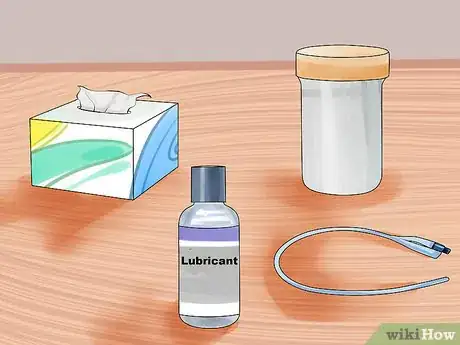
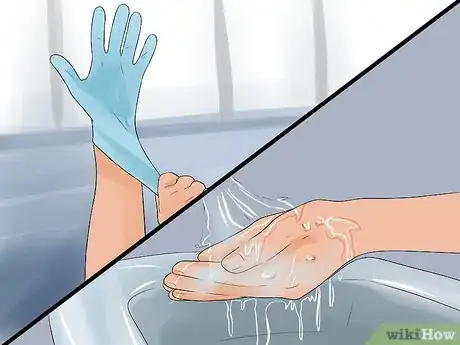
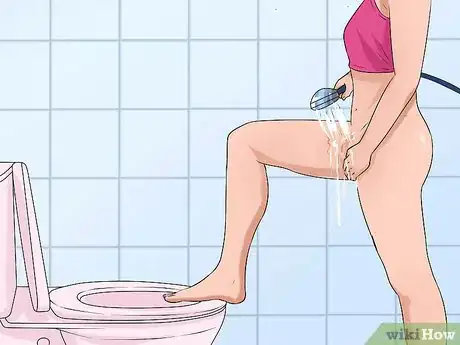
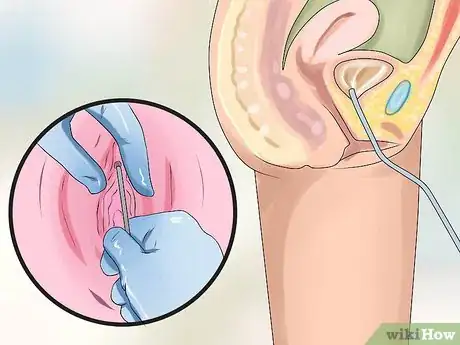
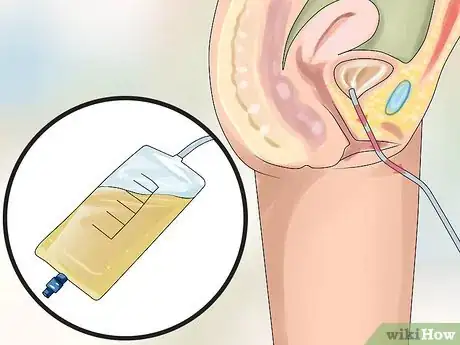
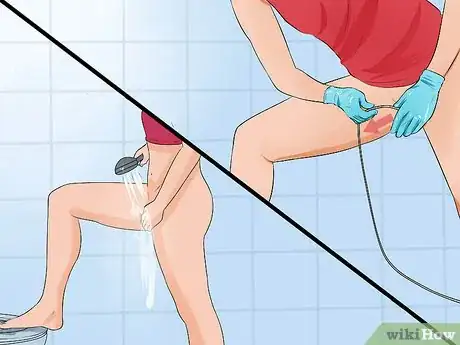
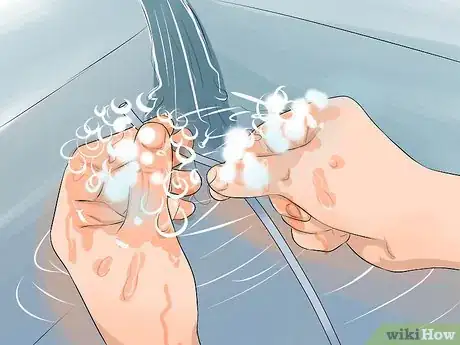
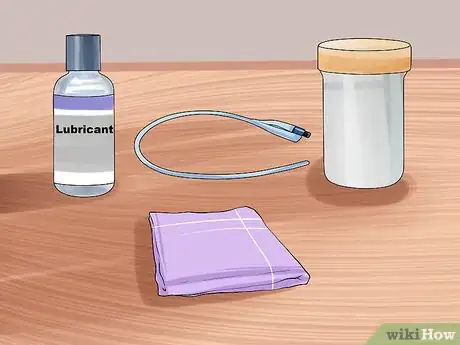
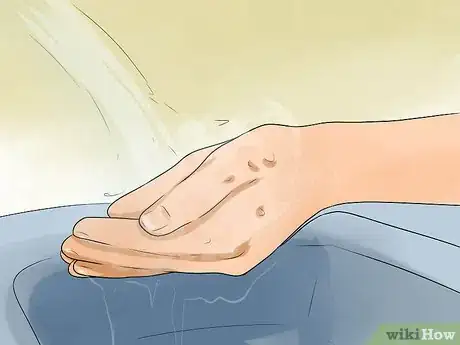
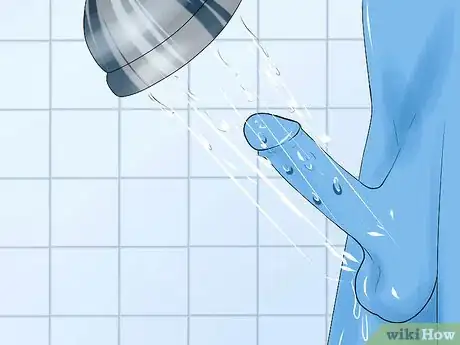
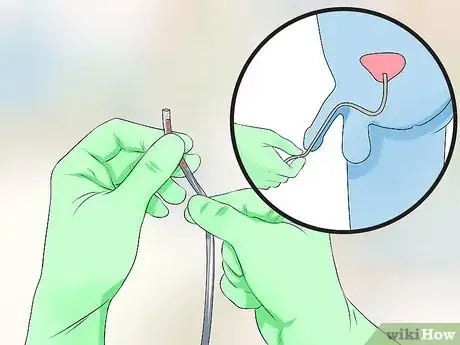

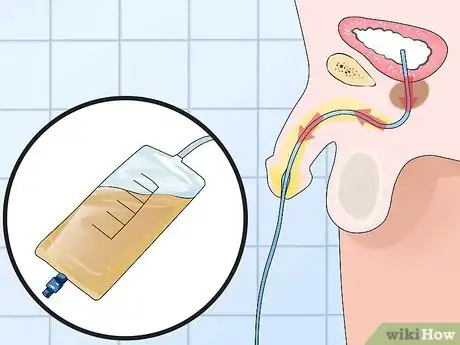
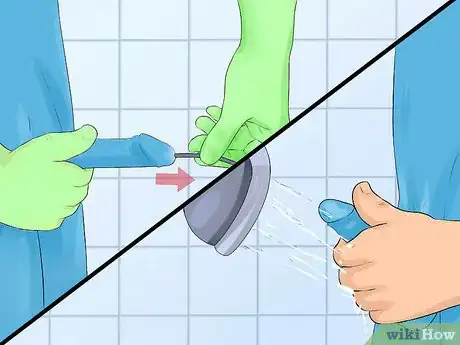
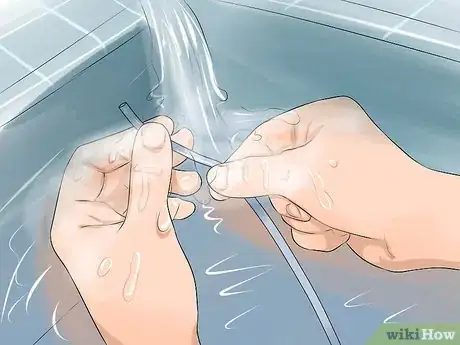

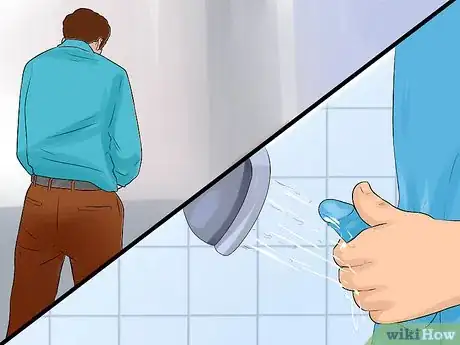
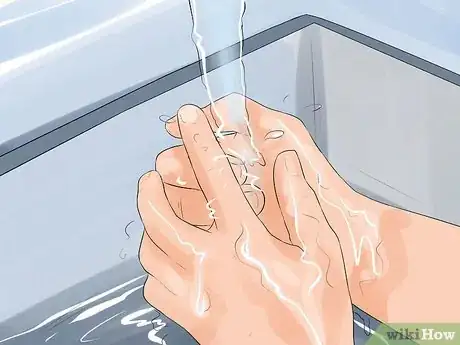






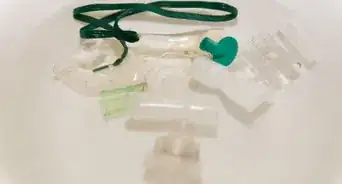




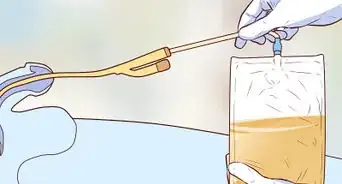
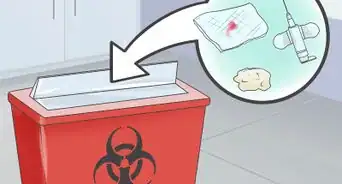








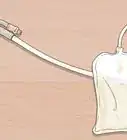





































Medical Disclaimer
The content of this article is not intended to be a substitute for professional medical advice, examination, diagnosis, or treatment. You should always contact your doctor or other qualified healthcare professional before starting, changing, or stopping any kind of health treatment.
Read More...